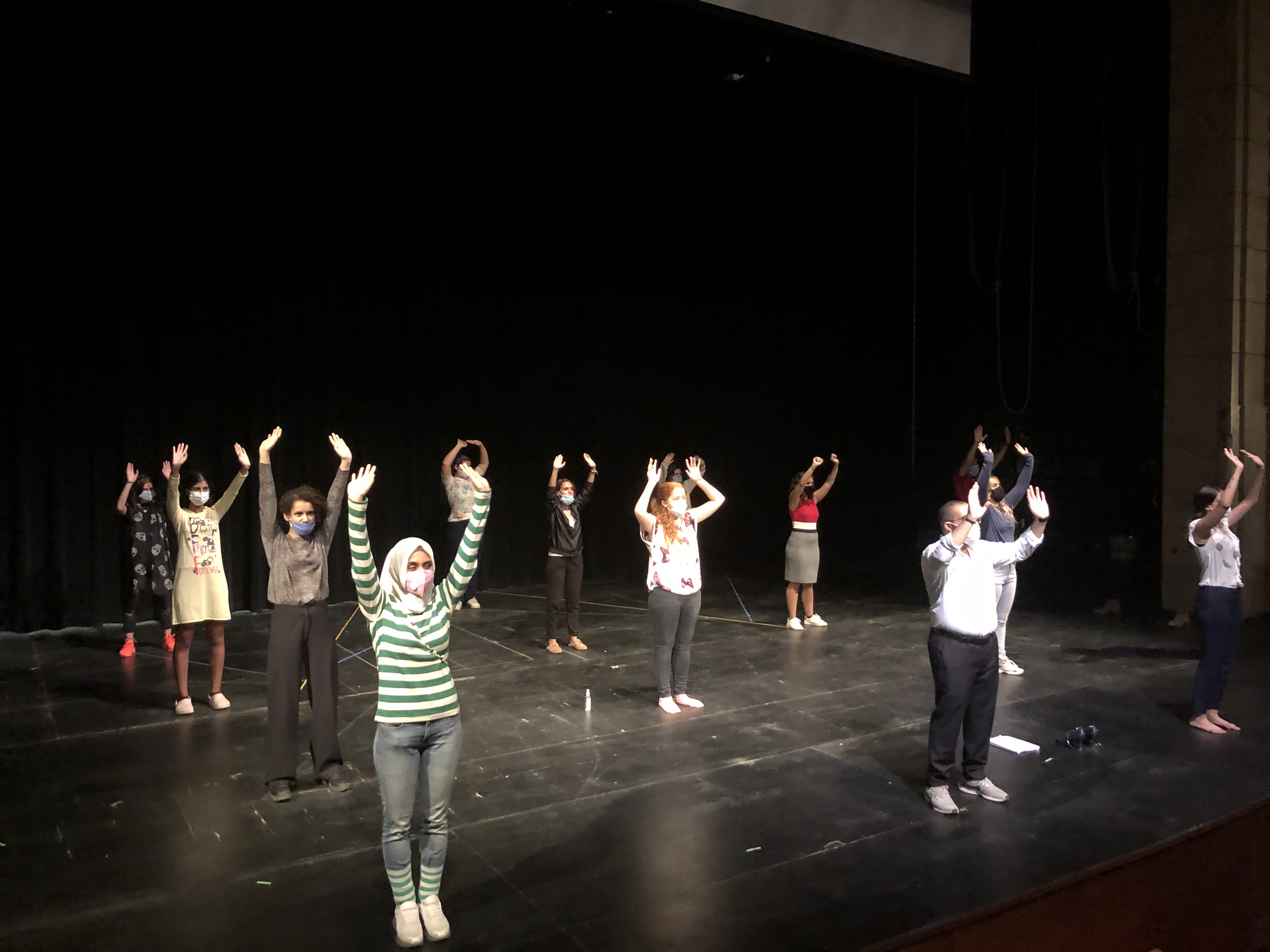COVID-19 is changing the name of the game in the world of business.
By Nahla El Gendy
As the coronavirus pandemic continues to spread globally, pushing governments to make significant interventions, businesses are continuing to adapt to the new normal while satisfying the altering needs of their customers.
"The current circumstances that the world is facing are more of a game changer. Any business, regardless of its position in the market, has to consider this and adjust accordingly in order to survive," said Alain El-Hajj '15, computer science graduate and chief operating officer of Paymob, a digital payment enabler empowering the underserved, consumers and merchants with access to financial services. "Feeling forced to change your day-to-day operations isn't an easy thing, but, fortunately, we are quite used to it."
COVID-19, and any other crisis, shouldn't change business models if they are well-structured but could definitely lead to what El-Hajj described as a typical evolution, where companies could reinvent themselves, refresh their thinking or invest in something new. "The current circumstances made us shift our focus to certain products more than others," he said.
Paymob recently partnered with another electronic payment service provider, Klickit, to offer digital payment solutions to GEMS [Global Education Management Systems] schools in Egypt, enabling tuition fees to be paid online. "This initiative will help cater to consumer needs during the COVID-19 pandemic and is expected to be implemented in countries other than Egypt," said El-Hajj.
More Home, More Internet
For technology-based companies such as Paymob, working from home did not introduce a drastic change. "Luckily for us, as a fast-scaling company, our need for technologies that help us perform our day-to-day operations more efficiently are pretty much the same for working remotely, and due to our great team, we've adapted quickly to these new measures," said El-Hajj.

Some companies, such as [34]ML, already applied a remote work policy before COVID-19. Founded by two AUC alumni, Ahmed Saafan '11 and Ashraf Mourad (MA '19), [34]ML is a software company specialized in the design and development of mobile applications. It recently launched the Around Egypt application to promote tourism and show the beauty and hidden gems of Egypt in 360 degrees -- a service that comes in handy during the COVID-19 pandemic. Offering an immersive virtual reality experience, the Around Egypt app reached more than 1 million users on Facebook and over 30,000 downloads since its launch in April 2020.
"The app features more than 30 different virtual reality tours of sites all around Egypt -- from Cairo to Aswan, from temples to national parks, from religious sites to entertainment venues, from 80 million years ago to the 21st century," said Saafan, construction engineering graduate, business lead at [34]ML and a member of AUC's rugby team. "There couldn't be a better timing to launch this app. With the COVID-19 pandemic forcing everyone to stay at home, people are geared more toward the internet, online applications and technology in general. With tourism, this is particularly useful because mosques, churches, temples, museums and other tourist attractions in Egypt have been closed."

Around Egypt app
In light of the COVID-19 pandemic, the company is also working on adding to its existing portfolio Software as a Service (SaaS) products, a form of cloud computing whereby a service provider hosts applications for customers and makes these apps available over the internet for a monthly fee. "The pandemic has triggered us to pivot into a more product-led company and transform our business offerings," said Saafan.
Adapting and Adopting

Breakfast team working under strict health and safety measures
It's not only the internet whose consumption has increased but also food -- and, of course, companies had to adjust. According to Deloitte, one of the world's largest management consulting firms, out-of-home consumption that typically generated the highest profits has fallen, coming to "nearly a standstill," whereas at-home consumption has risen. This has caused disruptions in supply chains and may lead to long-term changes in customer behavior and demand, as Deloitte described it.
Breadfast, an online supermarket that delivers freshly baked goods and groceries to people's doorsteps, is adjusting its operations in this unprecedented situation by implementing firm health and safety measures.

"We have placed strict precautions to mitigate the risk of the coronavirus, from sanitizing all workspaces and wearing face masks to reducing shifts and having an alarm that goes off every hour for employees to pause operations and wash their hands," said Yehia El Darawy '12, '17, petroleum engineering major and country manager of Breadfast.
COVID-19 pushed Breadfast to accelerate its online grocery shopping: evolving from a bakery delivery service to an online supermarket, and increasing its portfolio to include more categories such as cooking ingredients, health and household items, baby needs and even meat -- with plans to add a broad range of products such as chicken, toothpaste and garbage bags, among others. The bakery also went from next-day delivery services to delivery within an hour in several areas across Cairo. "We are humbled by the opportunity to provide a safer way of grocery shopping with a wider range of products to keep our teams and customers healthy," noted El Darawy.
What About the Nonprofits?
The business impact of COVID-19 is not merely restricted to business entities but social enterprises as well, such as Helm, which provides advisory and coaching services for institutions, professionals and governments to work toward the effective and sustainable inclusion of people with disabilities in the workplace. Like many entities, Helm pivoted from a physical academy to an online one and shifted the focus of its training -- whether individual or corporate -- to new, customized needs brought about by COVID-19. This has allowed people with disabilities under Helm's umbrella to not only work from home but also learn new skills online through different development courses. Consequently, Helm Academy's online platform became the first inclusive online learning platform in the Middle East and North Africa that is specialized for people with disabilities, according to Amena Elsaie '11 and Ramez Maher '12, co-founders of Helm.

"Since the start of the quarantine, our team has conducted a total of 180 client meetings per month instead of 20," said Elsaie. "We met virtually with e-learning experts across five continents to study the best technological solutions and learning management systems out there in order to provide the most suitable and accessible model tailored in Arabic
to fit our client needs."


One of Helm's employees while working from home
Within Helm, "we have temporarily shifted the organizational roles so that those whose jobs were affected are performing other duties and supporting other teams. We have also used this time to invest in the team's growth through bringing in consultants and organizations for capacity building and training to help lift the spirits of people during these turbulent times," Elsaie added.
Not only is COVID-19 affecting business operations at Helm, but it has also changed perceptions, ideologies and personalities. "We regularly give our people the Myers-Briggs Type Indicator in order to identify their personalities and make sure they are doing what's best for them," noted Elsaie. "It's surprising how these tests have shown a drastic shift in people's personalities both pre-pandemic and post-pandemic, as extraverts turned to introverts, including myself!"
Will Things Be the Same?
Regardless of how tough this period has been for almost all businesses, it has offered eye-opening lessons that are here to stay.
"Productivity skyrocketed in certain areas, including technology and product functions, and that is something we all want to capitalize on. When these tough days are over, we will surely go back to our meetings and gatherings, but work-from-home arrangements and other measures will be adopted more extensively," said El-Hajj.
[34]ML has already started to focus more on its marketing activities. "Since everyone is online more now, we are investing more time into creating content for our marketing outlets," said Saafan. "We are also considering sticking to virtual meetings even after the end of COVID-19. From a business perspective, the pandemic has actually accelerated digital transformation across several functions and industries. For example, people are now more comfortable with online meetings and digital signatures."
Saafan also stressed how much he and his team have learned about unforeseeable circumstances suddenly changing set plans. "We now recognize the importance of a clause in our agreements for force majeure, which we never really understood before," he said.
These unforeseen circumstances have taught Helm's team to step out of their comfort zones and never take no for an answer. "When you think there is only one way of doing business, COVID-19 comes to show you that there are always other options. We just have to expand our horizons and think outside the box," reflected Elsaie.
And be flexible. "The most important lesson we learned is that you have to be very agile in order to make the best use of opportunities that come your way. There are a lot of competitors out there, so you have to change rapidly, adapt and try to read the trend as best as you can," said El Darawy.
For Paymob, COVID-19 proved "how betting on the right people and finding the right team are key for surviving all hardships," affirmed El-Hajj. "We will always continue to work hard to find the right talent and maintain the right culture through our growth, as COVID-19 is not the first challenge and will definitely not be the last."




 Siam on an excursion to gold mines in the Eastern Desert near the Red Sea to collect samples
Siam on an excursion to gold mines in the Eastern Desert near the Red Sea to collect samples Siam during an AUC-King Abdullah University of Science and Technology expedition to the Red Sea
Siam during an AUC-King Abdullah University of Science and Technology expedition to the Red Sea

 Around Egypt app
Around Egypt app Breakfast team working under strict health and safety measures
Breakfast team working under strict health and safety measures


 One of Helm's employees while working from home
One of Helm's employees while working from home





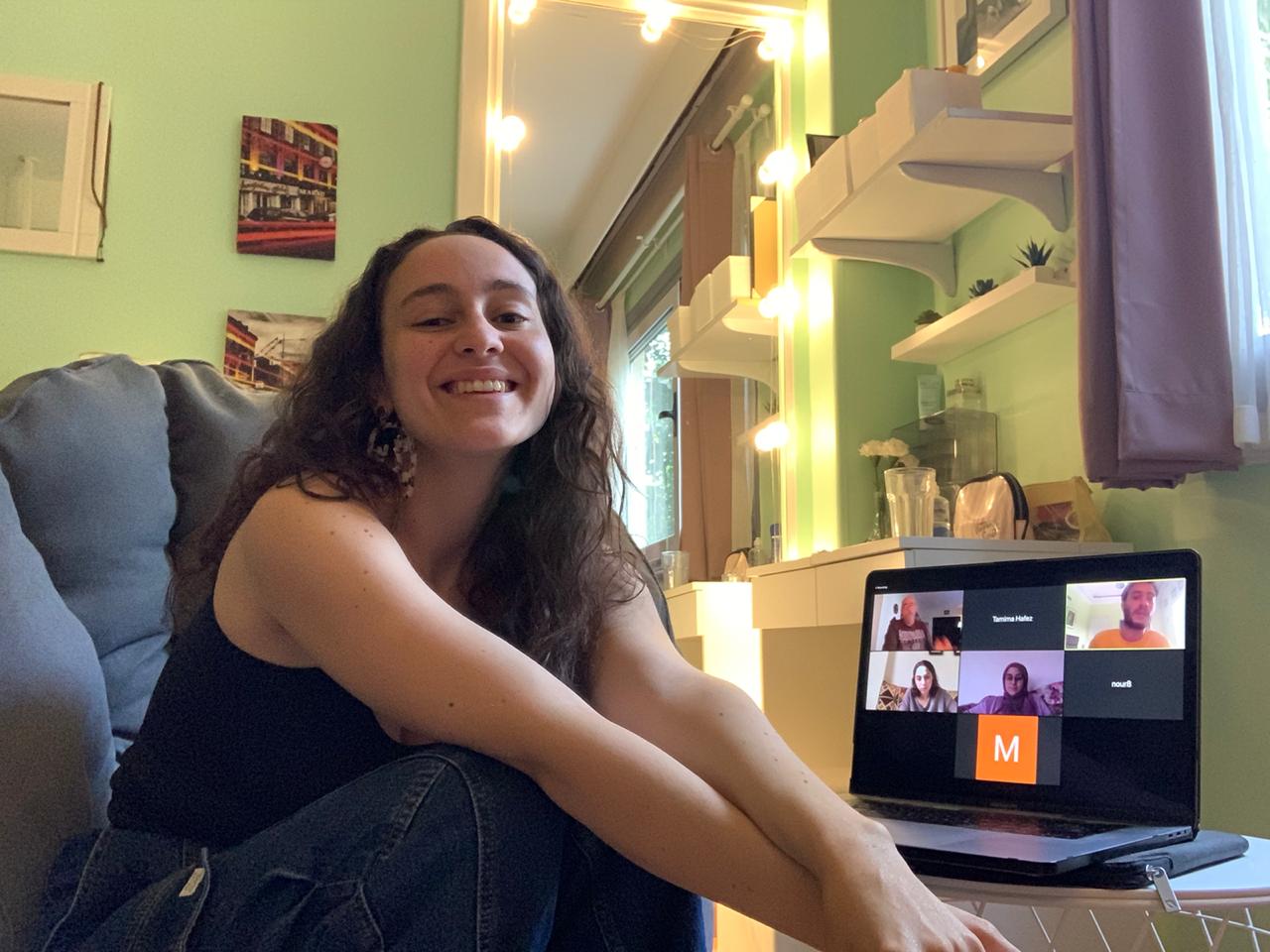



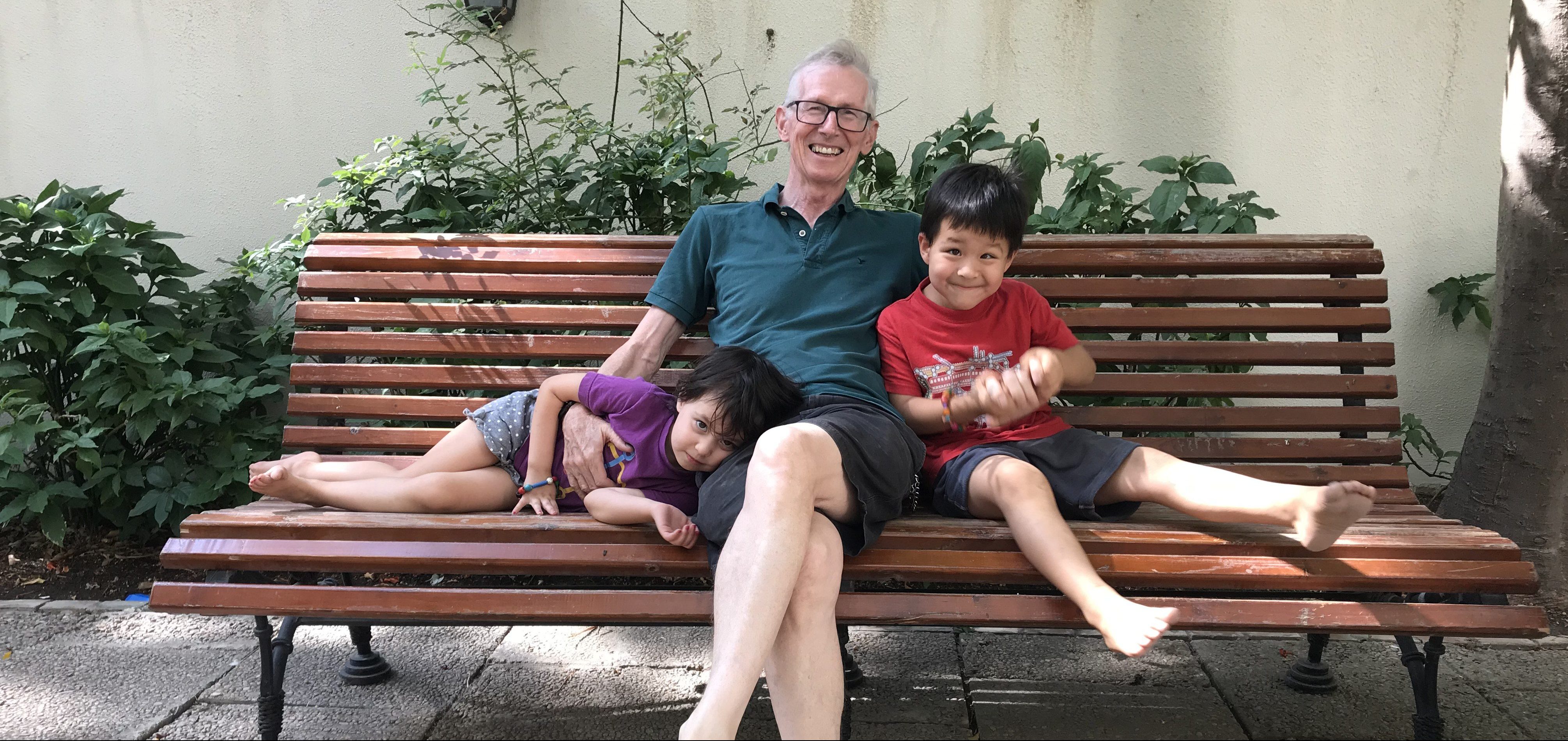



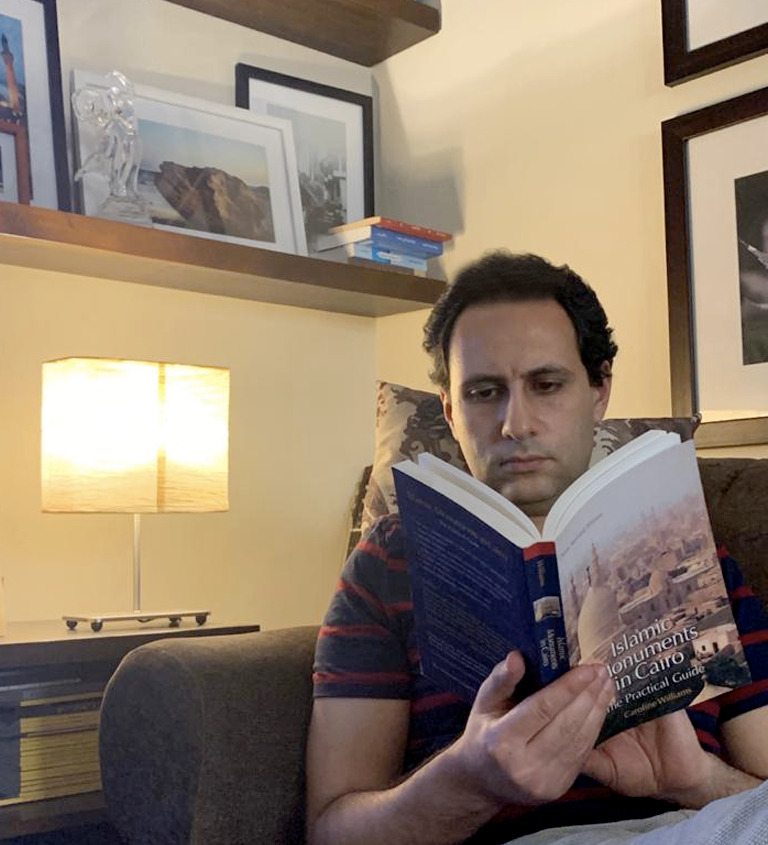





 Ibrahim and her family
Ibrahim and her family Ibrahim was a ballerina during her time at AUC
Ibrahim was a ballerina during her time at AUC
 Elbow tapping has become a common form of greeting during the pandemic
Elbow tapping has become a common form of greeting during the pandemic